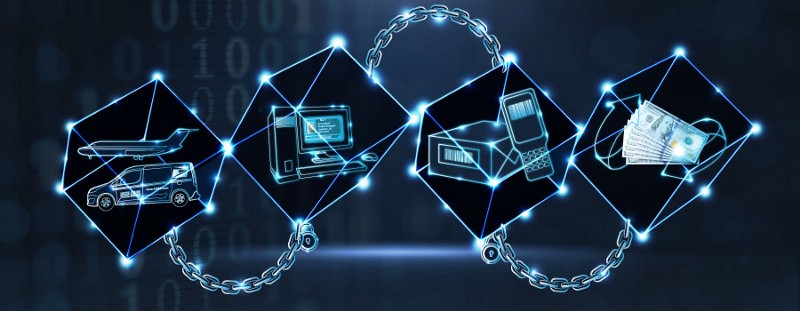The Distributed Internet of Things

In the Internet of Things, services can be provisioned using centralized architectures (central entities acquiring, processing, and providing information), but various types of distributed architectures can be used as well.
Blockchain technology could provide a simple infrastructure for two devices to directly transfer a piece of property such as money or data between one another with a secured and reliable time-stamped contractual handshake. To enable message exchanges, IoT devices will leverage smart contracts which then model the agreement between the two parties. This feature enables the autonomous functioning of smart devices without the need for centralized authority.
As Internet of Things applications are by definition distributed it’s only normal that the distributed ledger technology, which blockchain is, will play a role in how devices will communicate directly between eachother (keeping a ledger and thus trail of not just devices but also how they interact and, potentially, in which state they are and how they are ‘handled’ in the case of tagged goods).
Blockchain is designed as a basis for applications that involve transaction and interactions. These can include smart contracts (smart contracts are automatically carried out when a specific condition is met, for instance regarding the conditions of goods or environmental conditions) or other smart applications that support specific Internet of Things processes. This way blockchain technology can improve not just compliance in the IoT but also IoT features and cost-efficiency.
The Internet of Things builds on the concept of the original Internet, which was composed of networking nodes (servers and computers) all linked together via global networks, and which is used for everything from data transfers and stock quotes to web surfing and media streaming. But the IoT isn’t about computer communications in the traditional sense; rather, IoT is about data collection from a much larger range of simple devices or sensors that communicate specific data to a centralized or semi-centralized collection point, and can receive simple commands back from that central source.
Hdac features decentralization, transparency, usability, and reliability, the applicability of the blockchain. But as the amount of transactions and data in public blockchain (like Bitcoin chain ) increases, it is necessary to consider a case wherein public blockchains will exceed their natural capacity.
That’s the reason Hdac also creates a private blockchain which also connected to its public blockchain. A private blockchain network or a permissioned blockchain is a blockchain with access privileges. Its configuration means it may not be accessed by every node freely unlike a public blockchain. Therefore, to access a private blockchain from a public blockchain, a bridge node or a relaying intermediary is required. This bridge node must have all of the configuration information of the private blockchain, to allow it the same level of access as its private equivalent whilst allowing it to post to the public chain. In summary, the private blockchain can be accessed only when the administrator of the private blockchain grants access through pre-authentication and registration. It will increase security and privacy protection.
This combination of both public and private blockchain will also increase the transaction speed up to 50x faster, which make HDAC far more scalable and reliable compare to other blockchains.
I have understand nothing (no I am kidding, just a tiny bit) but Im sure its interesting ^^